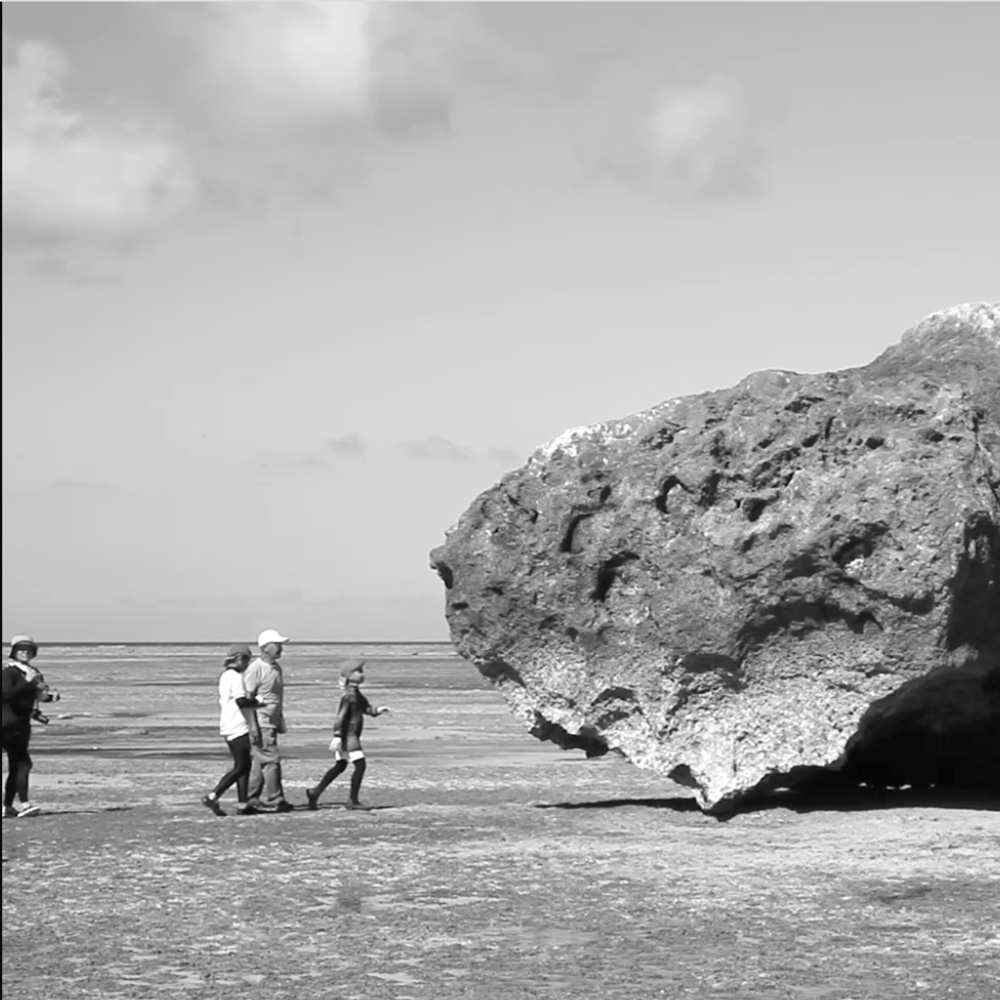小学校の低学年まで瀬戸内海を臨む岡山の小さな集落で育った。その頃の将来の夢は、考古学者だった。 きっかけは、帰り道に山の斜面で“ 貝塚”を見つけたこと。貝塚に興味を持ったのは、はるか昔の人々の生活の断片が、目の前に地層として露出していることに、奇妙な感覚をおぼえたからだと思う。もうひとつ、通っていた 古い木造の校舎が解体されたことも記憶している。愛着のある校舎が、重機によって無残にも壊されていく様子を、みんなで眺めて絵を描いた。
長い時間をかけて、人の生活や自然の“ 無数の偶然”から生まれた風景を眺めていると、自分の持っている 感覚を大きく超えて、時間や空間がつながり、新しい関係性/バランスが見える瞬間がある。ただ、風景は自然災害や人為的な開発によって、いとも簡単に姿を 変えてしまう。それさえも、遠い未来から見れば、新たな関係を生む小さな出来事でしかないのかもしれない。
2001年、東京の美術大学を卒業した頃、郊外の団地が立ち並ぶ中に、戦争の遺構がポツンと残されているのを見つけた。突然現れた自分の知らない遠い過去。もう一度見に行くと、跡形もなくコンビニになっていた。今思うと、それは貝塚や木造校舎の解体を見た幼い頃の体験に 似ていた。日本全国の戦争の遺構を調査し、撮影して まわるようになった。砲台や掩体壕(戦闘機の格納庫)やトーチカ(上陸する敵を狙撃する建造物)などは、かつての機能を 完全に失い、日常生活のなかで別の価値を与えられていた。僕は、過去の歴史的事実を“ 考古学” 的に発掘するのではなく、その眼差しを持ちつつ現在にカメラを向けて、 “ 考現学” 的に風景を切り取るのに夢中になった。4年後、それはシリーズ「戦争のかたち」となり、僕のデビュー作に なった。その後もアジアや沖縄の島々を旅して、表現活動を続けた。2020年には、生まれ育った瀬戸内地域の小さな 島に移住し、新たなプロジェクトを始めた。
ある過去の時間や出来事が残したモノを“ 主人公”に、日常の風景を見つめる。何気ない日々の表層的なイメージを扱っていても、自らのバランス感覚で見えない 根っこを表出させ、新しい“ 見方” や“ 価値”を提示したい。僕がこのような活動を続けるのは、“ 自分なりの方法で世界を知りたい” からだと思う。
下道基行
I grew up in a small village in Okayama near the Seto Inland Sea until I was ten years old. At the time, my dream was to be an archaeologist, an interest sparked by a shell mound I found in the hills on my way home from school. I think it interested me because I had this strange feeling that I was seeing a fragment of people’s lives from long ago, now exposed as strata in the soil right
before my eyes. Another thing I remember vividly is seeing our old wooden school building be demolished. My classmates and I all drew pictures as we watched our beloved school be relentlessly destroyed by heavy machinery.
When I look at the landscape, shaped over millennia by the countless coincidences between nature and human inhabitation, I connect with a moment in time and space that goes far beyond myself, which can reveal new relationships and a new sense of balance. But landscapes are easily transformed by natural disasters and human development, which far in the future, may be nothing but micro-events that, too, generate new relationships.
In 2001, around the time I graduated from art school in Tokyo, I stumbled upon some ruins from WWII amid a row of apartment blocks in the suburbs. I was suddenly confronted by a distant past I never knew. The next time I went to see the ruins, they were gone. No trace of the war was left. Only a convenience store stood in their place. Now that I think about it, this experience was similar to seeing those shell mounds and watching my school building be torn down. And so I began researching and photographing war remains all over Japan. Concrete artillery batteries, hangars, and bunkers had assumed very different roles in everyday life across the country, their original functions now long obsolete. I became obsessed with capturing the landscape in a “modernological” way — not by excavating the historical facts of the past, but by turning my camera to the present with that same
lens of modernology. Four years later, this project would become my debut series, Remnants. After it came out, I continued my creative expression as I traveled to the islands of Okinawa and around Asia. In 2020, I moved to a small island in the Setouchi region, where I was born and raised, to start a new project.
I try to look at my everyday surroundings in a way that focuses on things that have been left by moments and events of the past. I apply my unique sense of balance to uncover the roots hidden in plain sight, beneath the seemingly ordinary facade of everyday life, and present new values and perspectives. I want to know the world in my own way, which is why I keep doing what I do.
Shitamichi Motoyuki
